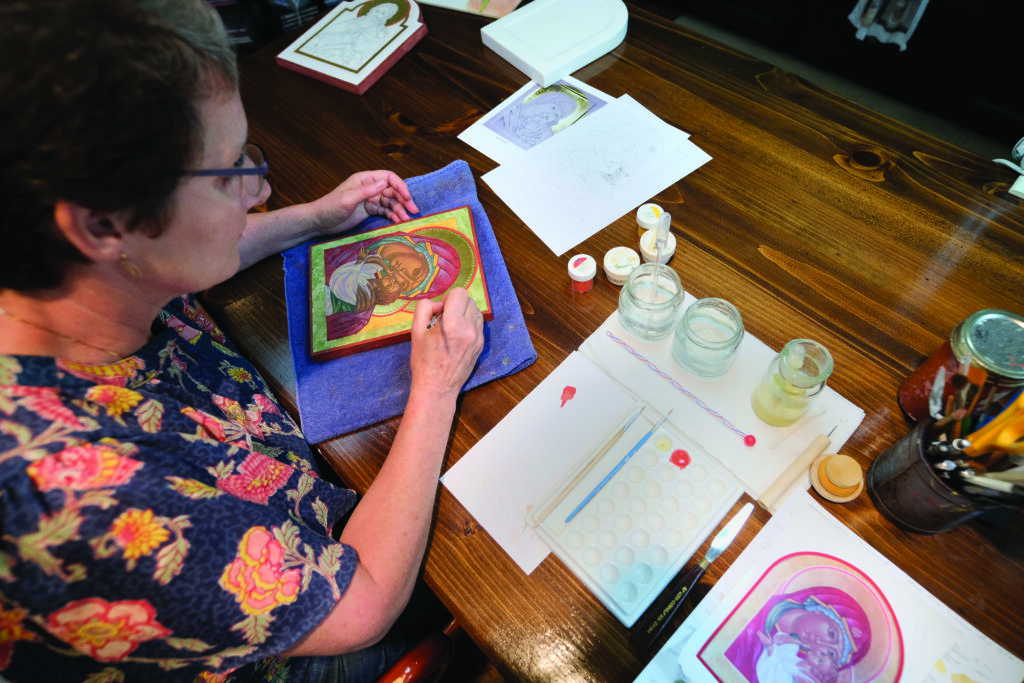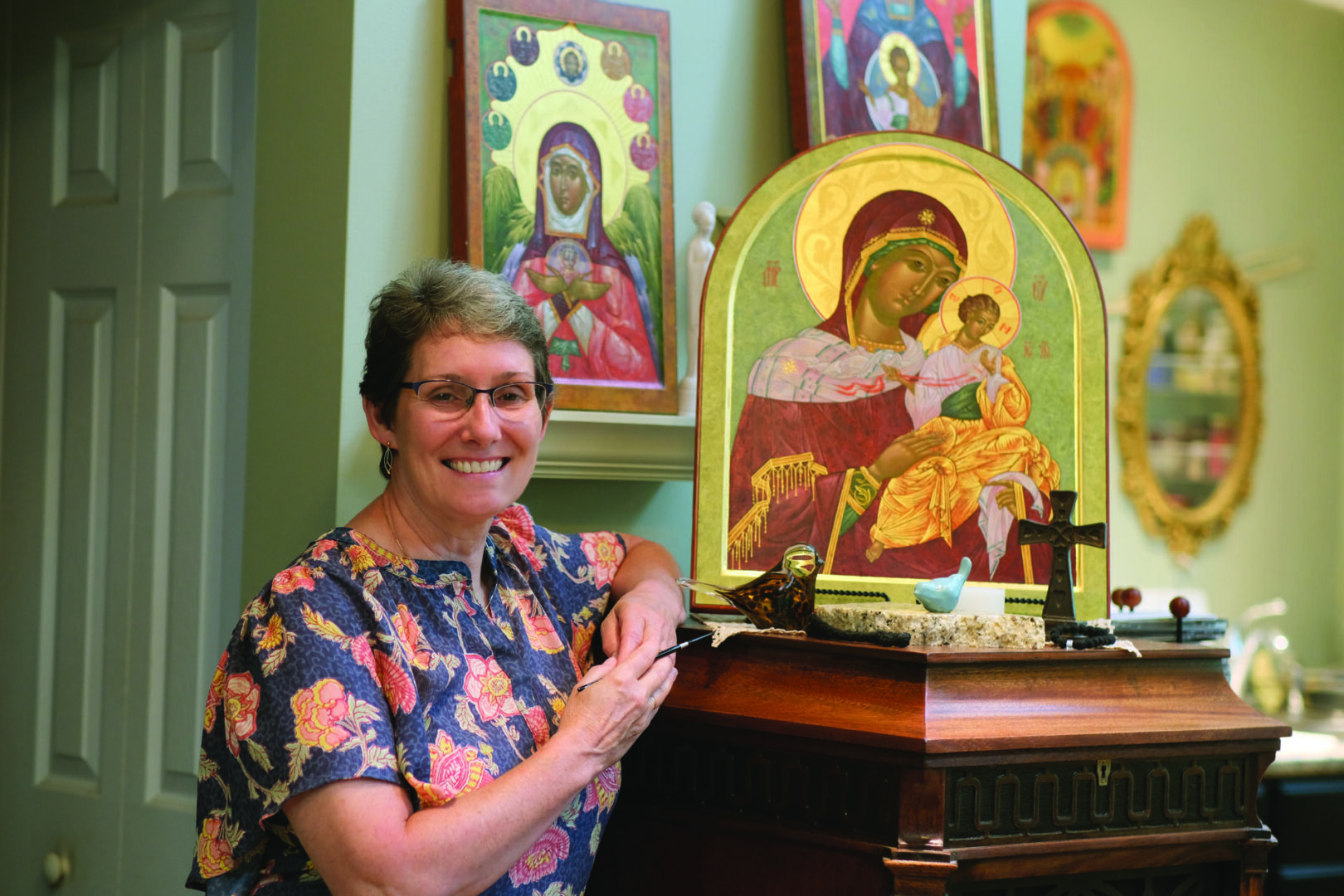Mary Kay Laplante creates icons in the studio of her State College home using materials and techniques that date back to the medieval era of Eastern Orthodox religious tradition.
“When I first began learning about icons, I saw them as stiff-looking and, in some cases, out of proportion,” says Laplante, who is Roman Catholic. “I thought they were in some ways kind of primitive art. But I learned that icons really are symbols that help us to reach beyond this realm, to the divine.”
Laplante is an artist, originally from Buffalo, New York, who studied medical illustration at Rochester Institute of Technology and worked in graphic design and video production. She moved to State College with her husband about thirty years ago when he accepted a job with Tipton-based New Pig Corporation.
“I was a stay-at-home mom for a while. Then I got to a place where I realized I really needed to get back to my art.”
In 2006, she saw an advertisement in her church bulletin for an icon painting class at a local church and decided to attend. “I didn’t know very much about icons but, when I went to that first icon class, I learned about what an icon is, which is not just a painting of a person or a scriptural event but a connection to that person or the events that are being depicted in the image. It really sparked something in me.”
She went online and found a six-day class in Endicott, New York, with a Russian master iconographer, Vladislav Andrejev, the principal and founder of the Prosopon School of Iconography.
“When I got into his six-day workshop, which was a kind of immersion experience, it was profound for me,” she says. “Every word out of his mouth spoke to my heart. I came to understand that painting the icon isn’t just a painting process. That, in fact, it’s a prayer.
“One of the interesting things about icons is that they’re not like secular art,” she says. Icons are intended to be contemplated, gazed upon and spent time with. They are meant to draw people into a deeper understanding of scripture and biblical history, and allow a mystical connection to the incarnate god Jesus Christ, to his mother and to the saints.
When Laplante creates an icon, she prays for guidance in the process, and for the person who will gaze upon and pray with the icon. The process of creating an icon takes her four to five days, or longer for complex icons.
Laplante says that because an icon is a holy image, only natural materials are used to create it. These include a solid wood board, linen fabric, natural gesso and glues, clay, twenty-three-karat gold leaf, natural ground and raw pigments, egg and wine.

After transferring the drawing onto the white, gessoed surface of the prepared icon board, Laplante applies a layer of red clay mixed with glue and then sands and burnishes it until very smooth. She breathes on the clay to activate the glue and uses a piece of wax paper to lay a sheet of gold leaf on the surface to create the halo.
Laplante says there is a symbolic meaning to each step of the painting process. For example, the clay is symbolic of the physical body, the breath is symbolic of spirit and gold represents divinity.
She combines dry pigments, egg yolk and wine to mix her own egg tempera, a translucent paint used long ago before the invention of oil paints. She paints the lines and then adds the first layer of color, a dark layer called roskrysh, which includes an underlying green color for the skin.
“The painting process is a layering of translucent colors of paint starting from darker layers and moving through lighter and brighter layers,” she says. “It is a journey from darkness into light as the image of the saint emerges on the icon board. Finally, the icon is sealed with oil and blessed by a priest, ready to be used as an instrument of prayer.”
She teaches classes in icon painting and enjoys sharing her knowledge and love of icons. She created two icons for the State Correctional Institution at Rockview’s chapel, where she and her husband lead a “Centering Prayer” group. She’s also a spiritual director who recently graduated from the Oasis Ministries School for Spiritual Development.
The iconography tradition is to say that you’re “writing an icon,” Laplante says. “It isn’t a secular art. It is a spiritual practice. When I teach people to paint icons, we begin each day with prayer.
“As you work in silence and prayer and move through the process of painting the icon, it changes you,” she says. “Painting the icon is a prayer in itself.”
For more information about icons or Laplante’s six-day icon writing classes, email [email protected]. T&G
Karen Dabney is a freelance writer who lives in State College.



